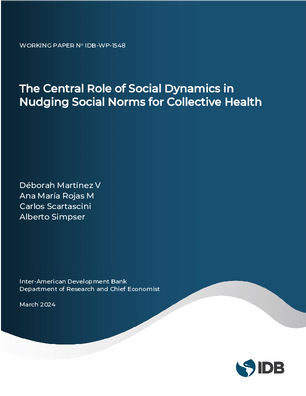The Central Role of Social Dynamics in Nudging Social Norms for Collective Health
Date
Mar 2024
Can societies be nudged to adopt beneficial behaviors? Publicizing how people behave on average descriptive-norms nudging has emerged as a key tool for increasing the adoption of desirable behaviors. While nudging, by describing social norms, has proven effective in one-shot interventions in small samples (marginal-effect designs), nudging on an ongoing basis at the population level may not necessarily lead to higher compliance and can give rise to major challenges. We use a simple model to show that social adjustment dynamics can drive a populations behavior in unanticipated directions. We propose a general approach to estimating equilibrium behavior and apply it to a study of mask-wearing during the COVID-19 pandemic. Our empirical findings align with the analytical approach and indicate that publicizing mask-wearing rates on an ongoing basis could have backfired, as initially high rates would have settled into substantially lower equilibrium rates of the behavior. In other words, if scaled up, positive marginal-effect designs do not necessarily translate into full compliance with the intervention.
Generative AI enabled





